If you have an excess of wild mushrooms you want to preserve, my tried and true mushroom ketchup recipe might be just the thing you're looking for. It's an old mushroom condiment with a rich flavor like soy sauce crossed with mushrooms.
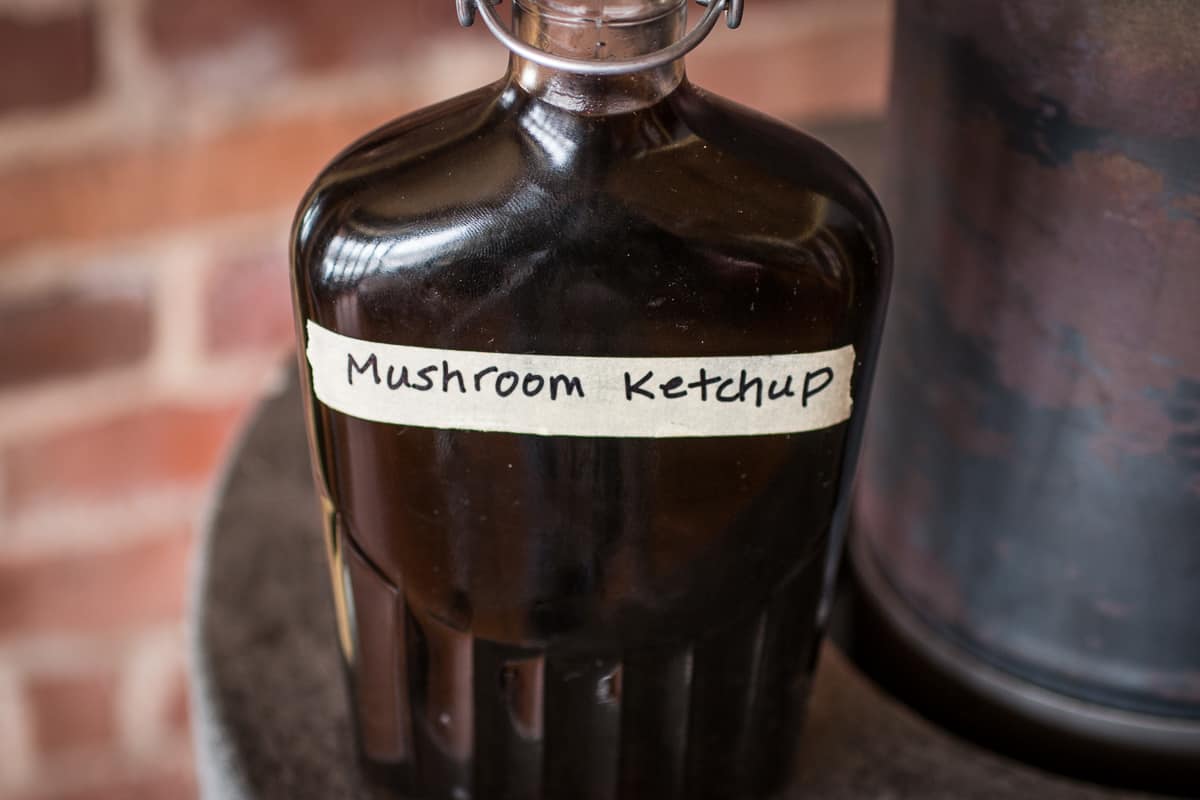
Have you ever run up to a massive chicken of the woods mushrooms or a hen, only to find it just a tiny bit past being good for the pan? Ever thought there might be something useful you could make with all the edible mushroom biomass you walk past, but pass up? Enter mushroom ketchup.
Mushroom ketchup is one of the original ketchups (also called catsups), all of which probably got their name from an Asian fish sauce called ketsiap. A couple hundred years ago, ketchup was basically a sort of catch all name for different liquid condiment, and you might have ketchups made from grapes, walnuts, or all kinds of different things.
Mushroom ketchup, is one, if not the best known (and still enjoyed) sauces in the family. I'd heard of it, as it's fairly well-referenced in cookbooks around the turn of the 20th century in a number of books I've read, but I didn't make my first batch until about 4 years ago, a time when I was going through 80-100 lbs of mushrooms a week--a great time to start working on a recipe.
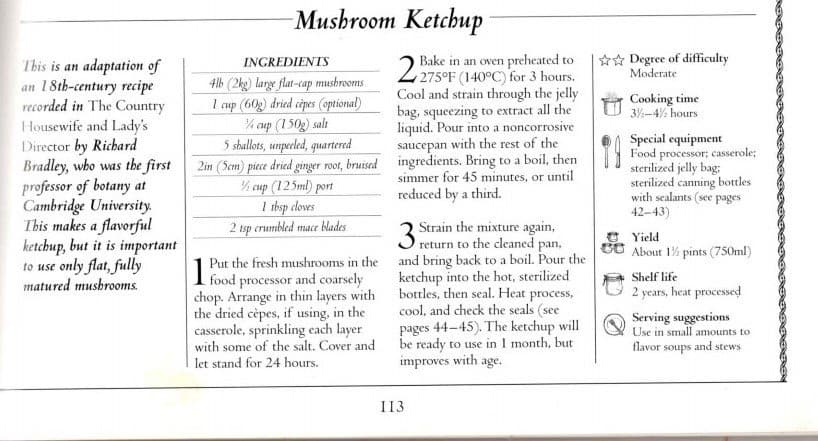
I'd seen the Townsend video many people reference now, and although I love historical cooking videos, there was a problem: at that time, there wasn't a single recipe online, and the only mushroom ketchup recipes I could find didn't include specific proportions of salt.
Let me tell you, seasoning to taste with salt, is fine, but something like "a few spoonfuls of salt" can be interpreted vary differently from one person to another (a pet-peeve chef tic of mine). One of my old line cooks made a ketchup from dryad saddles and, while it tasted excellent, it was so salty it made the water I used to chase it down taste sweet.
When making condiments, measuring your salt with a scale can mean the difference between something tasting ok, and your friends saying "you should bottle and sell that".
First, I ordered a bottle of commercial catsup online to gauge the flavor before I set off on my own. Then, for my first couple batches of mushroom ketchup, I had my cooks save the stems and season them with 3% of their weight in salt and leave them in the cooler.
After a couple weeks of collecting stems, I'd add some dried boletes (slippery jacks from Chile) along with some spices, then cook, puree, strain and bottle. It was really, really good. The mushroom flavor, even made from cheap boletes and buttons, was deeply mushroomy and rich, and hit the menu soon after in the form of cream of mushroom soup, using mushroom ketchup to underline the earthy flavors.
The only problem was that I ran out too fast, so I started ordering product specifically to make the sauce, which is when I developed the version I'm sharing with you today: a version by the mushroom hunter, for the mushroom hunter.
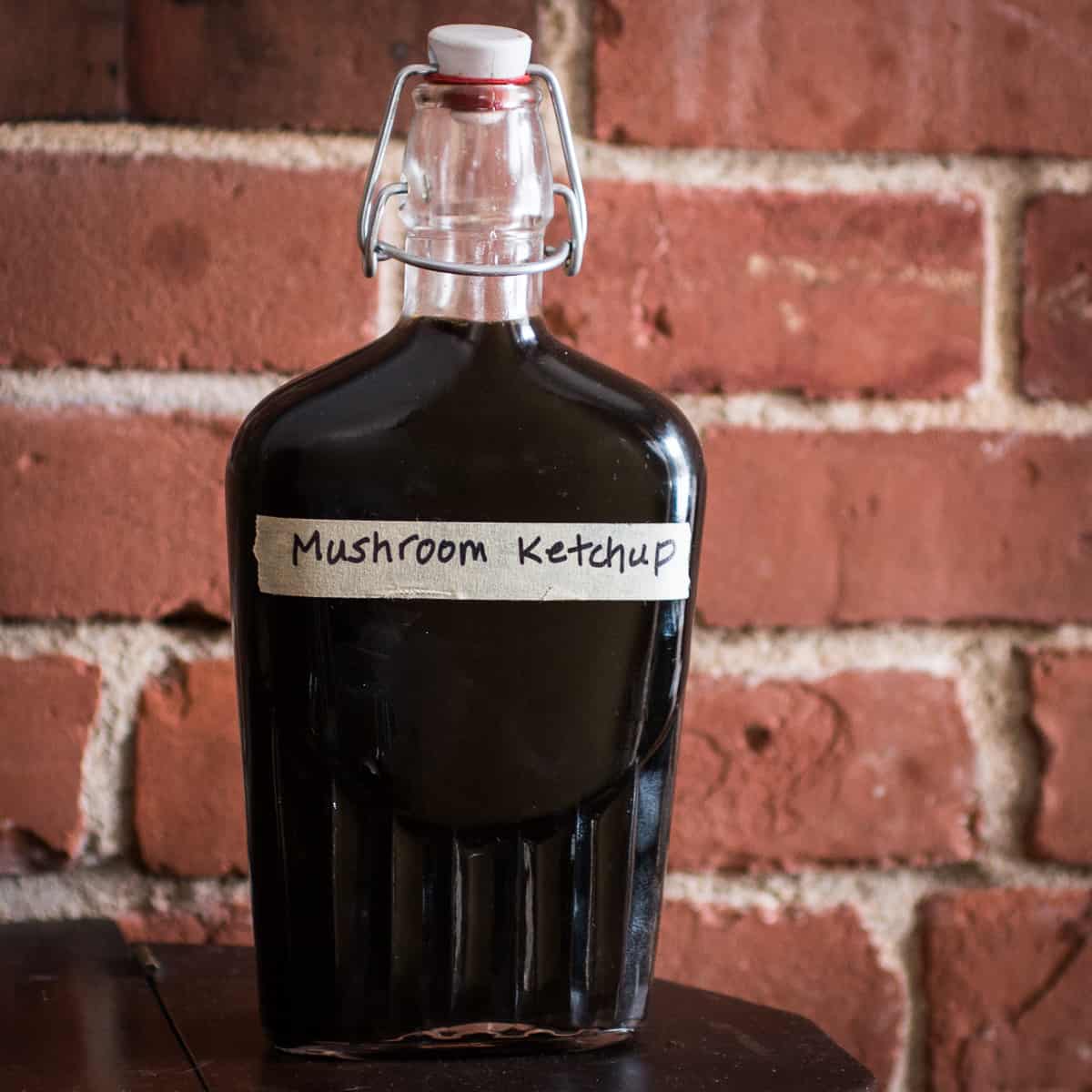
Here's some takeaways I've learned over the years:
Tips
- Don't use the pores of mature boletes. Bolete pores have a tendency to produce a gelatinous, viscous ketchup.
- Despite what other recipes will say online, don't puree the mushrooms. I like to pulse them in a food processor, or shred them through a food mill or food processor attachment. Pureeing will give you a cloudy finished sauce. That being said, it still tastes fine, and, you can always puree 4 cups with ½ teaspoon of xanthum gum to make a slightly thickened condiment--good in it's own right.
- Keep it in the fridge. Even though there's vinegar and salt, the salt is only a concentration of roughly 7-10% percent, where soy sauce is generally 16-20%. While it won't go rancid, I noticed some jars growing kahm yeast a few years ago, which while it won't hurt you, it can eventually create it's own flavors which isn't good. I've also had some jars feel pressurized and develop flavors of amonia, and although the flavor dissipated with cooking, it's still off-putting.
- Save the drained mushroom mash, dehydrate it, and use as a salt substitute. You can also dehydrate it, powder it, and add it back to the finished ketchup for a thicker, product, especially if you bind it with xanthum gum (see above).
- The best species is whatever large amount of fungus you have available. Common agarics, like the ones typically used in videos and online, can be difficult to source en-masse, but hens, chickens, and older boletes are great.
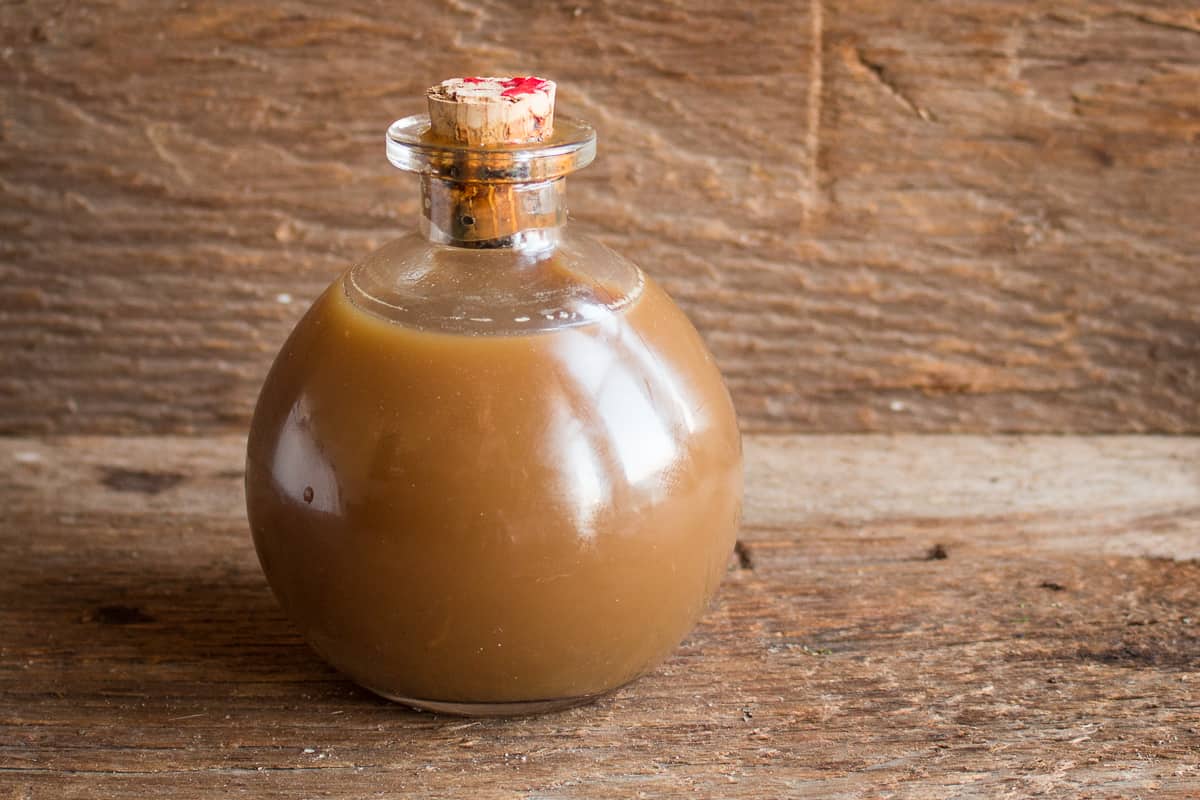
Use Ideas
I've done a lot of different things with the stuff over the years, but here's some favorites that won't fail you.
- Marinade. Season meat with a couple splashes a few hours or overnight before cooking. It will literally taste like mushroom flavored meat.
- Soy sauce substitute. Anywhere you would use soy sauce. See the image here with my shiitake egg rolls, or just use it as an excuse to eat a giant bowl of buttered rice.
- Fish sauce substitute. Use it in peanut sauce, kimchi, sweet and sour salad dressings, etc.
- Soups. Used in a soup, the ketchup will fade into the background (unless you use a ton of it) but it adds earthy undertones
- Sausages. There's still plenty of salt in this stuff, and salt (not seasonings) is what forms the myosin (the coagulative substance that gives sausage a good bite) Try using the ketchup in my puffball brat recipe.
- Pan sauce. This is one of the first things I read about using mushroom ketchup in, from the book A Taste of Scotland by Theodora Fitzgibbons. Cook some cutlets, deglaze the pan with a dash of wine, then add a splash of mushroom ketchup, and thicken the sauce lightly with roux, starch, or butter.
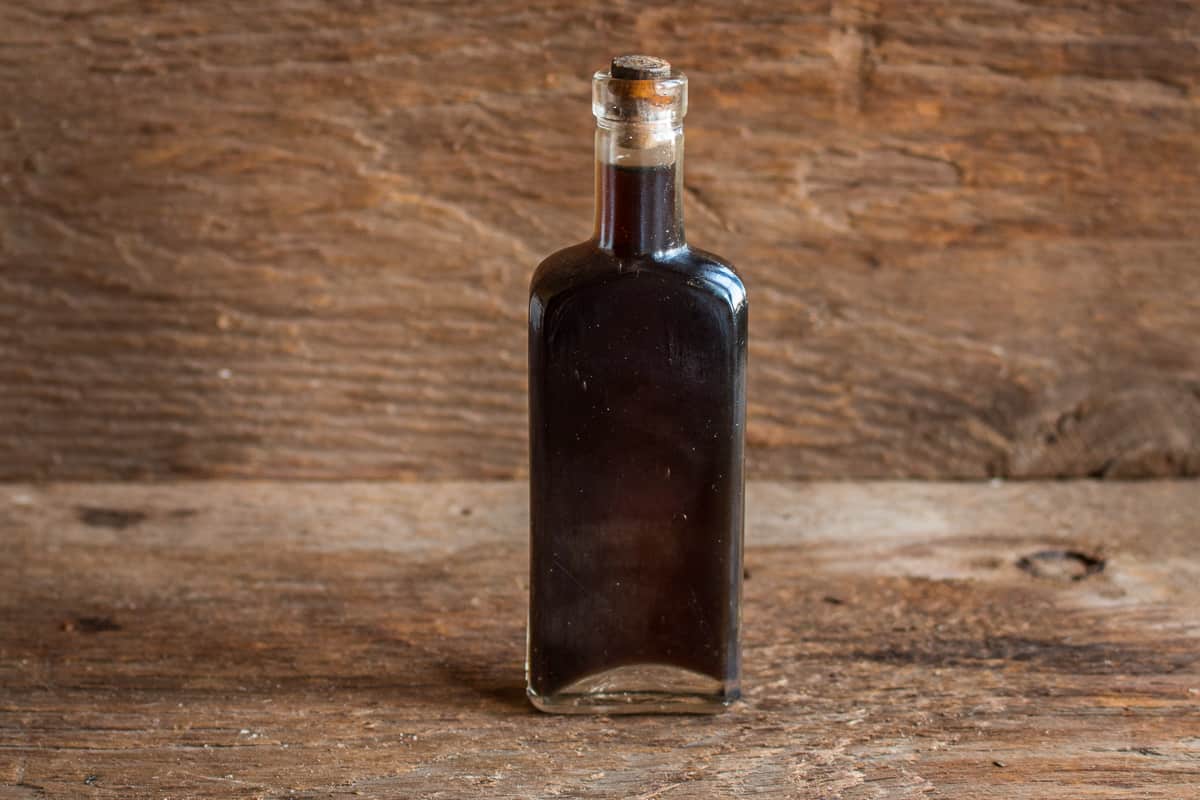
Variations
- Double ketchup. Reduce the finished ketchup down by half (or even a little less, like ⅓) for a salt concentration similar to soy sauce, and a richer, darker, flavor.
- Different species. Every species will taste a little different. For mushrooms that give off a light colored juice, omit the Worcestershire to keep the color pure.
- Thickened. You can thicken this by pureeing 4 cups with ¼ teaspoon of xanthum gum, or by using rice flour, starch, then cooking and pureeing, etc. A thickened ketchup is a more powerful condiment, since it's not as watery and will cling to food.
- No waste ketchup. Use 2.5 lbs of mushrooms instead of 5, and puree everything until smooth after you're done for a thick paste/condiment--excellent with pureed soups and sauces.
- With dried mushrooms. I used to add dried slippery jacks, porcini, or whatever I had when I could.
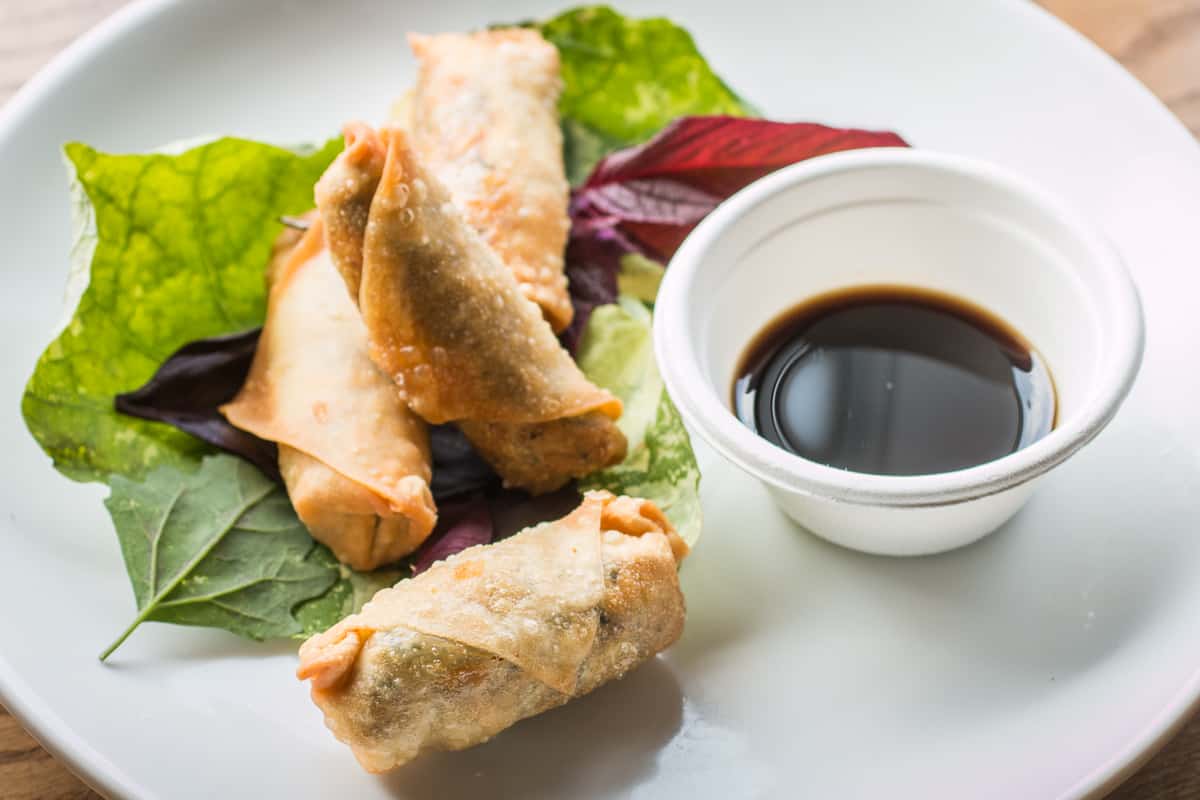
Wild Mushroom Ketchup
Equipment
- Large stock pot
- Cheesecloth or strainer
Ingredients
- 3-5 lbs wild or cultivated mushrooms, depending on availability trim, woody ends, etc.
- 85 grams roughly 6 tablespoons kosher salt
- 1 tablespoon ground black pepper
- Up to 2 qts water amounts of natural water in mushrooms will vary
- 2 Tablespoons minced garlic
- 2 fresh bay leaves
- 1 Tablespoons allspice berries toasted
- 2 Tablespoons chopped fresh ginger
- 1 teaspoon dried thyme
- 10 whole cloves toasted
- 2 tablespoon worchesterchire, or to taste optional, for color
- 1 cups apple cider vinegar or white wine, etc, use your favorite
Instructions
- Crush or chop the allspice and cloves. Pulse the mushrooms in a food processor, being very careful to coarsely pulse them in small batches, as over-processing will give a cloudy sauce.
- Combine the ground mushrooms with the salt and remaining ingredients except the water in a stock pot.
- Assess the amount of liquid, adding some of the water to moisten until the mixture is wet and slushy (dryer mushroom like polypores may take up to 1 qt of water, where boletes and cultivated mushrooms might take half that) Transfer the pot to a burner and bring to a boil, then turn off the heat and leave overnight to cool and infuse. Transfer it to a smaller container that will fit in your refrigerator overnight.
- The next day, warm the mushrooms and the liquid. Pour the mixture into a strainer lined with cheesecloth and allow to drain (you may need to work in batches. After the liquid has drained, squeeze the cheesecloth with a few handfuls of mushroom at a time to extract as much liquid as possible.
Reduce the liquid until roughly 4 cups remain (or
until you like the flavor, it should taste a bit like light soy) then pour into
a labeled container, chill and refrigerate until needed.- The ketchup will keep for a long time.

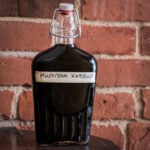
BAREeFOOt
> When making condiments, measuring your salt with a scale can mean the difference between something tasting ok, and your friends saying "you should bottle and sell that".
OK, wow, it seems "chefs" of today have completely forgotten the concept of seasoning TO TASTE.
Using gram measurements instead of ratios is already insane, yet everybody does it.
But measuring your salt on a scale… At that point you're not doing the cooking any more. You're just a robot blindly following instructions, with no clue how to balance taste or flavour.
The first tip I give any aspiring chef, to USE YOUR SENSES. Smell the spices! Look at the sweating onions! Taste the broth! Basic common sense.
The reason factory food sucks is because it all tastes exactly the same. No variation.
They pride themselves in it. And don't realise it's the reason it is looked down upon compared to hand-made food that never is quite the same. Because "perfect" is boring and forgettable.
Same thing with love partners by he way, research has found, about two decades ago.
Because it is basic neurology.
Alan Bergo
Hey there, thanks for commenting as this will be a good teaching example.
The statement you posted is the sort of thing I expect to hear out of know-it-all, green culinary school grads my sous chef's would task with locating the lobster gun in the secret room hidden under the dumpster.
If you read what you quoted you'll noticed I was referring specifically to condiments. As this a recipe for a sauce that will be held for a long time in the fridge it needs a certain amount of salt to be safe and not poison yourself and your loved ones. Notice I didn't say to use a scale to weigh your salt when you make scrambled eggs. There is a time and place for using a scale to measure salt, and a time for seasoning to taste.
As for general grams vs imperial, America is the outlier here as most of Europe uses grams instead of the imperial system which is imprecise, but has its uses. I use a blend of metric and imperial on this site as it's read around the world. If it's a baking recipe, cured meats, sausage, charcuterie, or a condiment, it will use grams to be precise. You say that factory food sucks, and while I agree with the sentiment, consider what would happen if a soy sauce factory employee just eyeballed 300 lbs of salt? You're essentially making a soy sauce analogy here, and if I say "season it to taste" that means drastically different things to different people, and someone would inevitably add not enough salt, which would create conditions for botulism to grow, then I get sued and it's a bad day.
Same thing with charcuterie and cured meats. The amount of salt in many of these things is also regulated by law, and I should know as I worked to develop recipes with my old chef that serve as a template for the entire state of MN HAACP system (hazard analysis critical control point model) which regulates how recipes like prosciutto, confit, fermented salami and even sauerkraut can be made and sold in restaurants to the general public.
From a practical standpoint too, measuring salt is essential for fermentation, and the salt level is usually measured as a % to give you control over how you want the finished product to turn out. To be able to consume it safely the easiest, safest way to do that is with a gram scale.
And we haven't even covered the differences in types of salt. While you can get by uses cups and tablespoons, the type of salt is also very important as the two most commonly used brands of kosher salt have extremely different volume/weight measurements: half the amount of Diamond Kosher fits in a cup compared to Morton kosher, which will obviously mean the difference between your food being a salt lick and tasting as it was intended to.
TLDR: It's fine to season to taste in recipes where the salt level isn't needed for safety. Measure your salt for baking, charcuterie, and things like hot sauce and soy sauce type condiments.